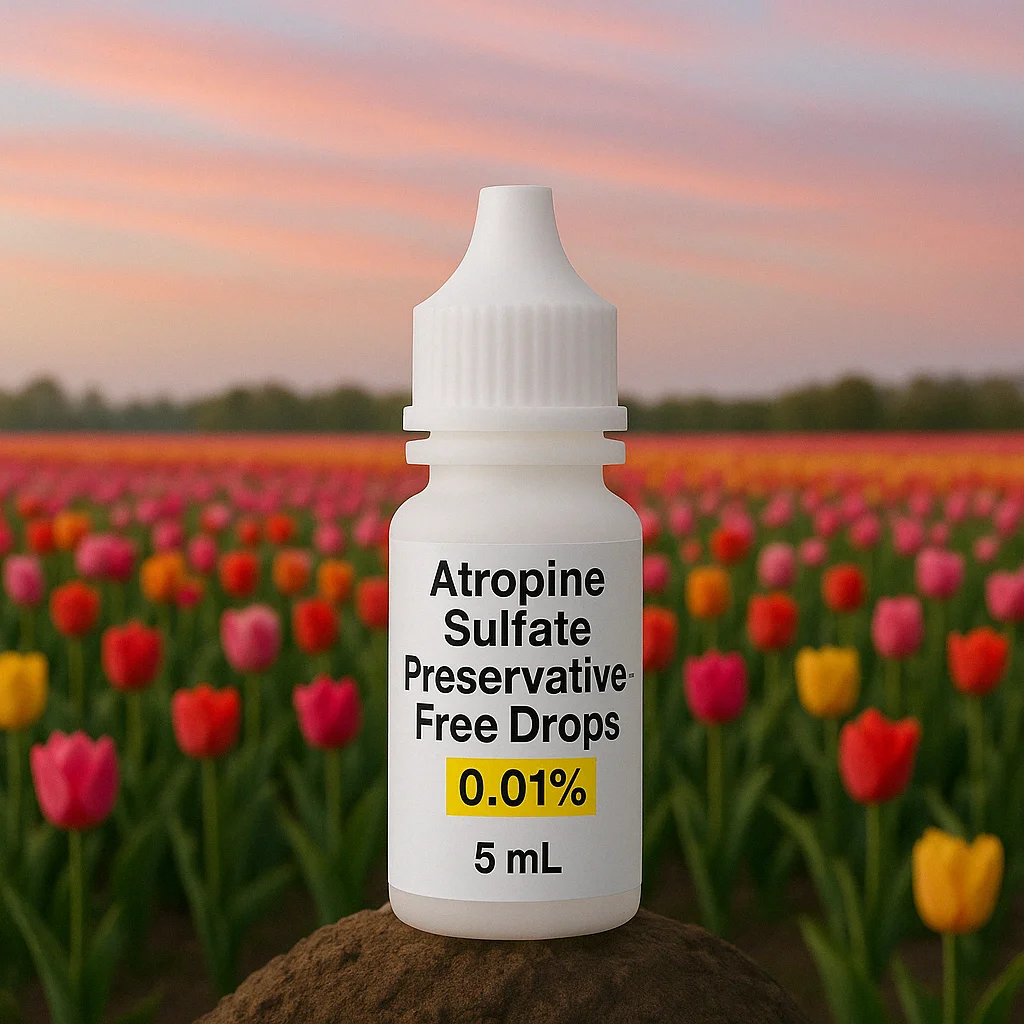Myopia Control & Management
Understanding and managing childhood nearsightedness with modern treatment approaches
What is Myopia?
Myopia, commonly known as nearsightedness, is a vision condition where close objects appear clear, but distant objects appear blurry. This occurs when the eye grows too long from front to back, causing light rays to focus in front of the retina instead of directly on it.
While myopia typically begins in childhood and progresses through the teenage years, the condition has become increasingly common worldwide, affecting nearly 30% of the global population.
The Growing Myopia Epidemic
Projected global myopia prevalence by 2050
People expected to have myopia by 2050
Of myopia develops before age 20
Low-Dose Atropine: A Proven Solution
Low-dose atropine eye drops have emerged as one of the most effective treatments for slowing myopia progression in children. Clinical studies have shown that concentrations of 0.01%, 0.025%, and 0.05% can significantly reduce the rate of myopia progression with minimal side effects.
How It Works
Atropine works by relaxing the focusing mechanism of the eye and potentially affecting the biochemical signals that control eye growth. The exact mechanism is still being studied, but results show consistent effectiveness across multiple clinical trials.
Available Concentrations
- 0.01%Lower concentration, minimal side effects, suitable for most children
- 0.025%Medium strength for moderate myopia progression
- 0.05%Higher concentration for rapid myopia progression
Effectiveness
Studies show that low-dose atropine can reduce myopia progression by 30-60% over two years, with 0.05% showing the highest efficacy. The treatment is most effective when started early and continued consistently.
Side Effects & Considerations
Potential Side Effects
- Light sensitivity: Some children may experience increased sensitivity to bright light, especially at higher concentrations
- Near vision blur: Minimal at low doses, but may occur with higher concentrations
- Allergic reactions: Rare, but discontinue use if irritation or redness persists
Most side effects are minimal at the 0.01% concentration, which is why it's often the starting point for treatment. Always consult with your eye care professional to determine the appropriate concentration for your child.
Additional Myopia Control Strategies
Outdoor Time
Research shows that spending 2+ hours outdoors daily can reduce myopia risk. Natural light exposure and viewing distant objects help maintain healthy eye growth.
Orthokeratology (Ortho-K)
Special contact lenses worn overnight to temporarily reshape the cornea. This can slow myopia progression while providing clear daytime vision without glasses.
Multifocal Contact Lenses
Specialized contact lenses with different focusing zones can reduce peripheral defocus and slow myopia progression in children and teens.
Reduced Near Work
Taking regular breaks from close-up activities (20-20-20 rule), maintaining proper reading distance, and limiting screen time can help manage myopia progression.
Questions About Myopia Control?
Our team of eye care specialists can help you understand your options
Contact Our Experts
